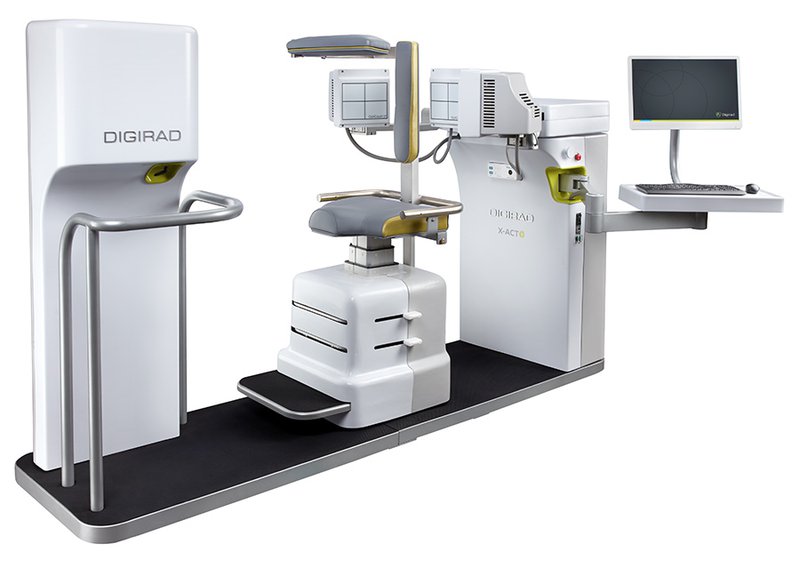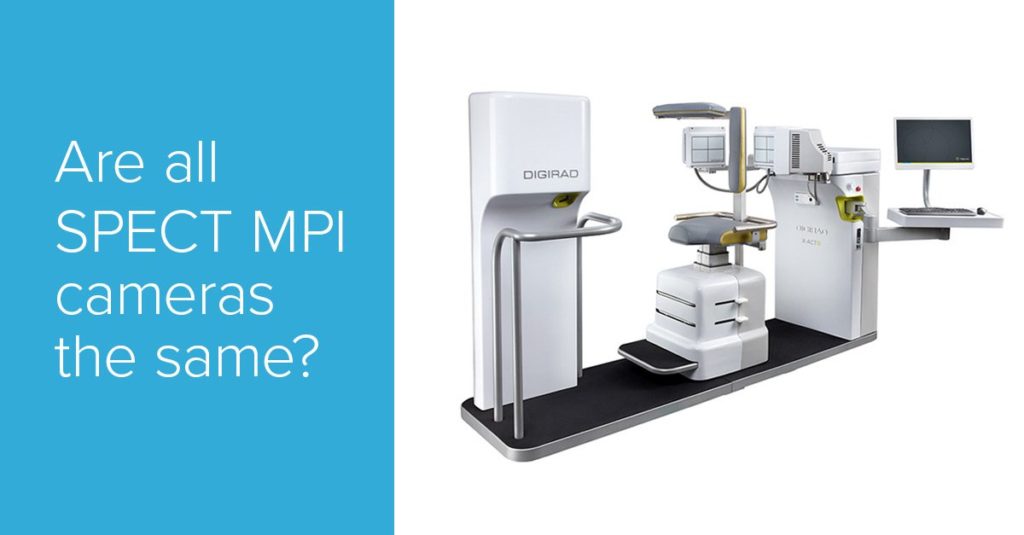It’s safe to say that SPECT is a well-established and widely used modality in diagnostic cardiac imaging. While some cameras may be younger than others or have more bells and whistles, is it also safe to say that they’re generally the same?
With rapidly advancing technology, the real question comes down to how; How much more convenience and comfort does a particular model provide? How much higher is the image clarity and quality? How much faster is the scan time and how does that affect the radiation exposure to the patient? Overall, how much difference do these answers make in the quality care you provide?
Anger vs. solid-state technology
The biggest distinction between a SPECT camera is its base technology, which can be either Anger or solid-state. Anger technology gamma cameras use vacuum tube photomultipliers (PMTs) and hygroscopic sodium iodide (NaI) crystals. These cameras were designed by Hal Anger more than 50 years ago. Although the technology is antiquated, there are a surprising number of Anger-based imaging systems still in operation today.
Solid state, on the other hand, is the more advanced technology that uses a pixilated detector. It provides benefits over Anger-based systems including, its compact and lightweight design, higher quality images, enhanced patient experience, and the ability to be employed in both fixed and mobile configurations.
For example, one of the most noticeable differences between solid-state and Anger is the size of the detector heads. Anger’s PMTs and NaL crystals require a significant amount of space. The solid-state detectors, however, are a fraction of Anger’s size and contribute to its more ideal, compact feature. The weight of a solid-state detector is also over 600% lighter than that of an Anger head too.

Solid-state technology
There are two types of solid-state nuclear imaging technology, direct and indirect conversion. Direct conversion uses cadmium zinc telluride (CZT). When the crystal absorbs a photon, it creates an electric charge directly, hence the term direct conversion. Direct conversion is effective but the manufacturing cost of CZT can be expensive.
Indirect conversion uses cesium iodide (CsI) with a photodiode. When a photon comes in contact with the crystal it produces light, which is converted to an electronic signal. This process is faster and the manufacturing cost of CsI detectors is significantly less than that of CZT.
With Digirad’s technology, each solid-state gamma detector is comprised of thousands of individual detector elements, or pixels. Each pixel is isolated from the other. When a scintillation event occurs on a particular crystal, its exact location can be quickly and accurately identified, making the detector substantially faster and more accurate.
Solid-state technology allows for lower levels of radiation to be used in imaging. And, attenuation correction can be performed using the same detectors for both the transmission and emission in a single sitting, thereby reducing scan time.
Attenuation correction
On the surface, many solid-state SPECT camera systems may look similar. But, if you compare their individual design, functionality, and features more closely, you’ll see that they can differ significantly.
For example, the Digirad X-Act+ camera uses CsI photodiode and employs triple head cardio-centric imaging. The Spectrum Dynamics D-SPECT camera uses CZT and relies on high efficiency moving column detectors. Both CsI and CZT crystals are effective, and both acquisition methods are fast imaging.
The distinguishing features are those that are absent. Although both types of detector geometries mentioned are efficient, moving columns have a higher potential for truncation.
Consider the fully integrated micro-low dose fluorescence attenuation correction feature of the X-ACT+. The D-SPECT imaging system does not offer any built-in process that identifies and corrects for soft tissue artifacts in their SPECT images. Given the fact that attenuation correction results in higher reading confidence, improved diagnostic accuracy, and a lower incidence of false positive studies, Digirad’s methodology is able to offer a significant improvement from a reliability, exposure, and cost standpoint.
In the end
All SPECT cameras are not the same. Whether it’s the number of detectors, technology, maximum weight supported, or the additional features provided – your best decision will be made by weighing the advantages and disadvantages of each model and manufacturer.




